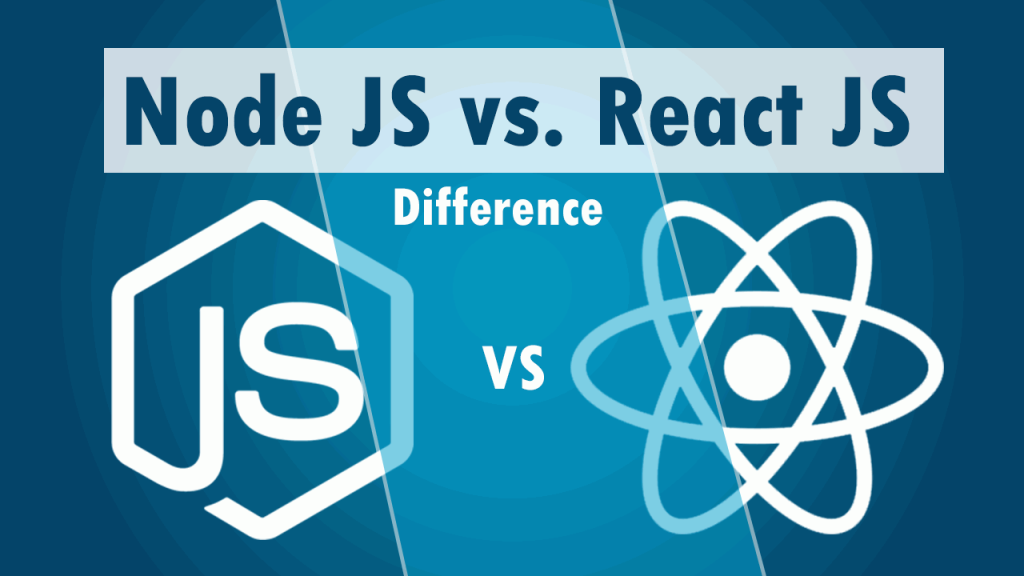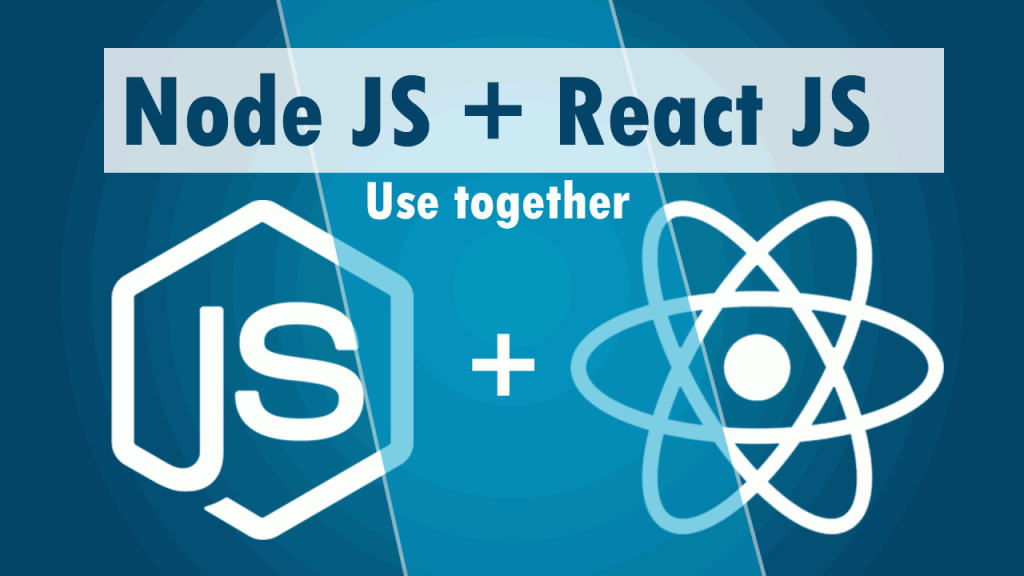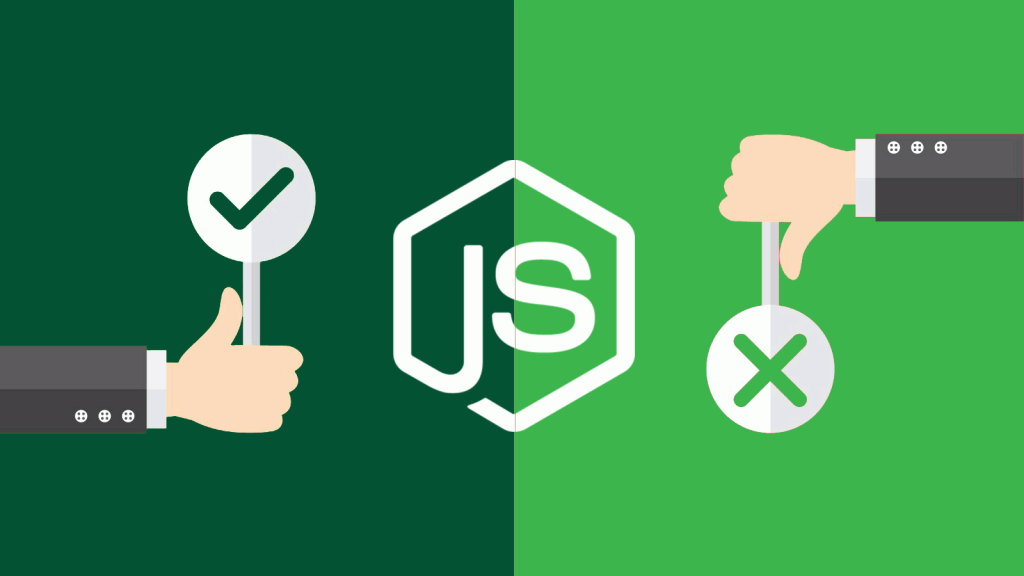The invention of technologies like Node JS and React JS brought about a new revolution to the web application industry. React JS is used to create the dynamic user interface. It’s the major technology of front-end development.
Because of its simplicity and comprehensive usability, it has been an integral part of building single-page applications.
Earlier, developers have to reach out to other programming languages to tackle the back-end or server-side of a web application. They have to encounter several interruptions and compatibility issues.
But Node JS has made everything favorable for the developers. It can take the best care of the back-end. By using an event-driving and non-blocking I/O model, it allows the user to access the database, host APIs, serve the HTTP requests, and so on. Both technologies are different in various aspects. There are some notable advantages and disadvantages of them.
However, if you want to discover the key distinctions of those two most-used JavaScript frameworks, you may give this post an attentive read. We’re going to demonstrate a clear insight to you in order to make you well informed about them.
By looking over this article, you could easily pinpoint which technology you need to apply to your projects. Let’s dive into the context!
Node JS vs. React JS, Which is Better?
- Choose Node.js if you need to build server-side applications, APIs, or other back-end functionalities.
- Choose React.js if you are focused on building user interfaces and interactive components for the front end of your web application.
What is Node JS?

Node JS is a JavaScript framework used for developing web applications. It allows the developers to execute JavaScript code outside a browser because of the cross-platform runtime environment. The user can manage back-end services like APIs, databases, mobile applications, and so on through it. It’s an open-source, lightweight, and effective framework. But it’s not a programming language at all; it’s just originated from a language to serve the user. Basically, it follows the non-blocking I/O and event-driving model to handle the back-end operations. It’s user-friendly, easy-to-learn, and scalable.
What is React JS?

React JS is an open-source, cross-platform front-end library. It’s used to control the front-end applications. The developers can build a web application in a structured approach through this user-friendly technology. It tackles the interaction and elements of a website. The runtime performance, speed, and modularity push it in high demand in the field of web applications. This declarative, efficient, and flexible technology is made of a broad range of components. The components render a reusable piece of HTML and allow for building up complex applications. It’s easy to learn and the code is readable. Almost all the interactive web projects are based on React JS because of the impeccable performance.
What is the difference between React JS and Node JS?
As we said earlier, both React JS and Node JS are JavaScript frameworks. But they are different in their operations, efficiency, and features. React JS is used in front-end service whereas Node JS serves the back-end. Some of the key differences between those two web technologies are highlighted below:

React JS
- React JS is an open-source JavaScript framework for building the user interface of a web application.
- It’s essential for building dynamic, complex, and interactive web page content with less effort.
- It uses virtual document object modules to enhance performance, scalability, and usability.
- It ensures stable code, easy debugging, and instant maintenance.
- It allows the developer to build a complex website structure
- It offers easy UI state cases and reusable code components
Node JS
- Node JS is an open-source, cross-platform, and high-efficient JavaScript library used for developing dynamic and functional web applications
- It’s highly extensible and can be scaled both horizontally and vertically.
- It follows asynchronous nature and perfect for on-time data streaming.
- It can handle many connections and ideal for Websockets servers
- It allows developers to make different servers like HTTP, TCP, and DNS.
- It’s fast, scalable, and lightweight and can tackle API and database system
- It can catch individual modules and convert JavaScript code into machine code
- It offers unit testing advantages and can perform non-blocking operations
What are the use cases of React JS?
Basically, React JS is used for designing single-page applications. Besides, it allows the developers to keep track of all the interactions. The prime use cases of React JS are below:
Building dynamic application
Web applications are more updated than ever before. Everyone prefers to have a dynamic and multi-functional website. Front-end technologies are essential to make an application user interactive. React JS plays a crucial role to make a website mobilized.
It handles many components at a time to ensure optimal functionality. A developer can take care of the user login and access permission section through it. In addition, React JS formula is used to change states frequently. It’s inevitable to decorate the user interface of an e-commerce website.
Creating complex architecture of an application
Simple websites can be developed with the basic knowledge of JavaScript. But when it comes to making the complex and structured architecture of a website, the use of React JS becomes mandatory.
React JS allows the developer to incorporates everything in a traditional approach. It ensures every operation by rendering components. All the elements seem easy to keep track of in complex web architecture by writing code in React JS.
Developing interactive applications
Flawless interaction of web applications is the foremost demand of a user. A bunch of front-end technologies is out there, but nobody except for React JS can provide optimal user interaction. React uses a virtual document object module to render components and pass data.
As a result, it can execute the operations faster than other technologies. Easy UI test cases make it highly interactive and prompt in developing applications that work quickly.
What are the use cases of Node JS?
Node JS is not a programming language but operates no less than a robust language. It’s applied to perform all the functionalities of a sophisticated website. Let’s discover the use cases of Node JS:
API server
A web application acts upon the direction of the functions. A back-end developer gives instructions on how a particular app will react. Node JS is the first choice to handle all the back-end activities. It can perform all the server-related operations most exquisitely.
For taking care of HTTP requests, DNS connection, TCP connection, and many more APIs, Node JS plays a significant role. It has the capability to tackle many connections immediately; thus it’s used comprehensively for API servers.
Data management
The database management system is completely handled by Node JS. It’s inevitable to connect the database to the application. From real-time data streaming to data manipulation, everything can be performed through Node JS.
It ensures quick transformation of data and makes the application highly interactive. Besides, it can be used to stream media and gather data from different sources.
Micro-services
Node JS offers many more micro-services to the web-based application. It’s used to upload files, trace user activity, ensure auto correctness, and so on. For inspecting API gateway, nothing can beat Node JS. It can facilitate the operations of dynamic inputs, buttons, state changing, and many more services at ease.
How to use Node and React JS together?
Having knowledge of both Node and React JS is essential for full-stack web developers. They have to integrate these two technologies to handle both client-side and server-side. So it’s obvious that they can use the frameworks together in a single application. How to use Node and React together?
It’s a burning question for the front-end developer who is attempting to get into the back-end or the back-end developers who’re void of front-end knowledge. However, we’re going to represent the integration mechanism of these frameworks briefly.

To do so, make sure you’ve installed NodeJS and npm. You need to work with your back-end part at first. Then you should make a file named app.js for Node JS and package.json to run all the essential modules.
Now you need to connect the React portion with the app.js file of NodeJS. Don’t forget to configure the package.json file to make some changes to your app.js file. The packagae.json file will ask the React to proxy API requests to the Node JS server. After that, you can run your project and see the output.
You may look for https://www.udemy.com/course/build-a-complete-web-chat-application-with-nodejs-and-react/ this tutorial to build a complete project using Node JS and React. The tutorial will teach you back-end and front-end authentication systems. In addition, you could learn real-time communication with Websockets; and create models, migrations, and seeders.
What difference between JavaScript and React JS?
JavaScript is a programming language. React JS is a product of JavaScript that conforms to the scripting programming paradigm. In React, a developer needs less code to write than plain JavaScript to build up a project. The significant distinctions between them are discussed below:
JavaScript
- A developer can structure JavaScript code in any approach by utilizing the formal concepts
- JavaScript applications begin with the initial user interface that already created on the server
- JavaScript stores data in its document object model and manipulate data from the DOM as well
- In order to update the user interface of an application, JavaScript generally updates the DOM node
- JavaScript features a vast amount of modules and extensive working methodologies
React JS
- Basically, React breaks the user interface into several components to develop an application
- React applications use a blank HTML page and get created dynamically in the initial state
- To store and manipulate data, React applications use regular JavaScript libraries
- React updates the components based on setting and changing of components
Node JS vs. React JS: Which is better?
It’s a tough question as both technologies are applied for several essential purposes. They are efficient in their respective working fields. If you want to perform front-end applications, you must take help from React JS.
Besides, you can’t carry out the back-end activities without Node JS. For developing a full-fledged web application, you need to apply both frameworks at the same time. So they are both crucial for developing multi-functional web applications. A full-stack developer needs to master them to gain optimal professional success.
What are the advantages and disadvantages of React JS?
The notable advantages and disadvantages of React JS are described below:

Advantages
- It provides front-end support for the web applications
- It ensures easy user interface test cases
- It offers reusable code components
- It allows faster debugging and virtual DOM
Disadvantages
- It seems somewhat difficult to learn JSX
- It keeps updating with some additional features
- It doesn’t ideal for back-end activities
- It’s not highly extensive
What are the advantages and disadvantages of Node JS?
Now it’s time to cover the advantages and disadvantages of Node JS. Let’s have a look:

Advantages
- It’s used for back-end applications
- It can take care of data and API
- It can catch multiple individual modules
- It works like a major programming language
Disadvantages
- It follows the asynchronous programming method
- It doesn’t contain a rich library
- It’s very hard to learn
- It doesn’t ideal for front-end activities
Final words
Both Node JS and React JS are essential for developing web applications. They are applied in different parts of the application. There are distinctions between them in terms of usage, pros, cons, efficiency, and many more aspects.
To build up a complete web application, both technologies are used considering their working nature. If you compare these two JavaScript frameworks, you could realize how important they are in the field of web technology.
Almost all the giant companies like Facebook, Instagram, Twitter, Google, and so on used these two frameworks. Instead of using the functionality of plain JavaScript, it seems easier to apply these frameworks. The frameworks are updated, user-friendly, and easy to navigate.
However, you’ve already got a clear overview of these most-used JavaScript technologies. We think you could consider what is suitable for your project or your programming career from now.





